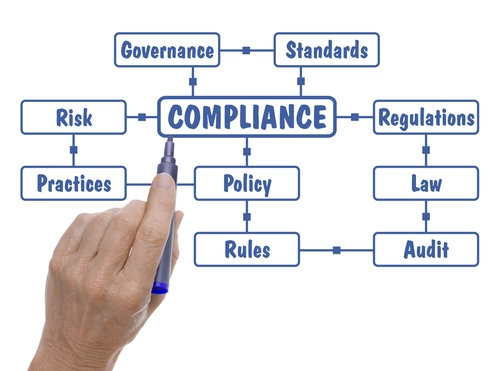Internal Medicine Coding Alert
Stay Away From RAC Audits By Avoiding These Common E/M Errors

Hint: Look for clues in documentation to catch the appropriate code choice.
If you do not want to raise red flags with recovery audit contractors (RACs), don’t forget to look carefully at POS and need for modifier use with E/M codes every time you report an E/M encounter.
The Centers for Medicare & Medicaid Services (CMS) published two recent RAC findings in its latest Medicare Quarterly Provider Compliance Newsletter, which offers guidance to help you tackle billing issues you might be experiencing.
Check Your Location of Visits
The first RAC issue that CMS shared involved errors on E/M services provided to hospital inpatients. In many cases, physicians who are clearly accustomed to reporting outpatient hospital codes (99201-99215) erroneously reported these for inpatients. Instead, you should report a code from the 99221-99233 when you perform an E/M service for a hospital inpatient.
How the RACs know: RAC auditors can look at your file and then confirm whether or not a patient was at your practice vs. in the hospital on a particular date of service. For example, one RAC auditor discovered a claim for a 79-year-old patient admitted to the hospital on Oct. 23 and discharged on Oct. 26. The physician reported 99205 on Oct. 24. The RAC auditor confirmed that the patient was not on a leave-of-absence from the hospital on that date, which means that the physician should have reported an inpatient E/M code rather than 99205.
Look for these keywords: If you’re about to submit a claim for your physician’s outpatient E/M service, but you suspect the patient may have actually been an inpatient on that date, look for the following keywords that may indicate that he saw the patient in the hospital rather than in your office or another outpatient setting. If you see any of these, check with the hospital before submitting that outpatient E/M code.
For example, the physician may have thought that the patient was admitted to observation. As a consultant to a patient in observation, your physician would have to report a new or established office/outpatient visit code (99201-99215). However, if the patient was converted to inpatient status prior to your clinician seeing the patient, only inpatient visit codes can be reported. The facility records should be able to confirm the patient status if the codes need to be corrected when a place of service denial is received.
E/M with Allergy Visits
The RACs identified another problem-prone area when investigating claims for E/M visits with allergy testing or allergy immunotherapy. Billing an E/M with these services is “appropriate only if a significant, separately identifiable service is performed,” CMS says in the article. If you are merely seeking informed consent or to ensure clinical viability for the allergy testing, you can’t count that toward an E/M element, because it’s included in the immunotherapy service.
If you do perform allergy immunotherapy (for instance, 95117) and you see the patient for a separately identifiable E/M service, you must append modifier 25 (Significant, separately identifiable evaluation and management service by the same physician or other qualified healthcare professional on the same day of the procedure or other service) to help the payer know that a separate service has been performed in addition to the allergy immunotherapy. Maintain documentation of the separately identifiable service that has been performed.
For example: A patient presents to receive her scheduled bimonthly allergy immunotherapy for allergic rhinitis due to animal hair and dander (477.2). During the visit, the patient complains of a severe sore throat and some fever. Your physician performs and documents a level-three E/M service, resulting in a diagnosis of acute tonsillitis (463). The physician provides the allergy immunotherapy injection as scheduled. You may report 95115 (Professional services for allergen immunotherapy not including provision of allergenic extracts; single injection) and 99213 (Office or other outpatient visit for the evaluation and management of an established patient, which requires at least 2 of these 3 key components... Typically 15 minutes are spent face-to-face with the patient and/or family) along with the modifier 25 appended to 99213.
Resource: To read the entire Medicare Quarterly Provider Compliance Newsletter, visit http://cms.gov/Outreach-and-Education/Medicare-Learning-Network-MLN/MLNProducts/Downloads/MedQtrlyComp-Newsletter-ICN908950.pdf.
Internal Medicine Coding Alert
- CPT® Coding Strategies:
Report Vaccine Administration Scenarios With Success
Hint: Use modifier when reporting significant and separately identifiable E/M service. When your internist administers [...] - Compliance:
Stay Away From RAC Audits By Avoiding These Common E/M Errors
Hint: Look for clues in documentation to catch the appropriate code choice. If you do [...] - ICD-10 Update:
Acute Maxillary Sinusitis: J01.0 Expands To Provide Better Specificity
Hint: Follow similar list of inclusions and exclusions for both ICD-9 & ICD-10. When your [...] - You Be the Coder:
Code 15851 Needs Anesthesia Service
Question: Our internal medicine specialist recently performed removal of sutures in the office for an [...] - Reader Question:
Furnish Entire Address in Block 32 of HCFA
Question: If you are billing home visits, 99341-99350, the place of service is 12. My [...] - Reader Question:
Know When to Use Modifiers for Unbundled CPT® Codes
Question: If I cannot find my two code pairs in the CCI edits, how do [...]

